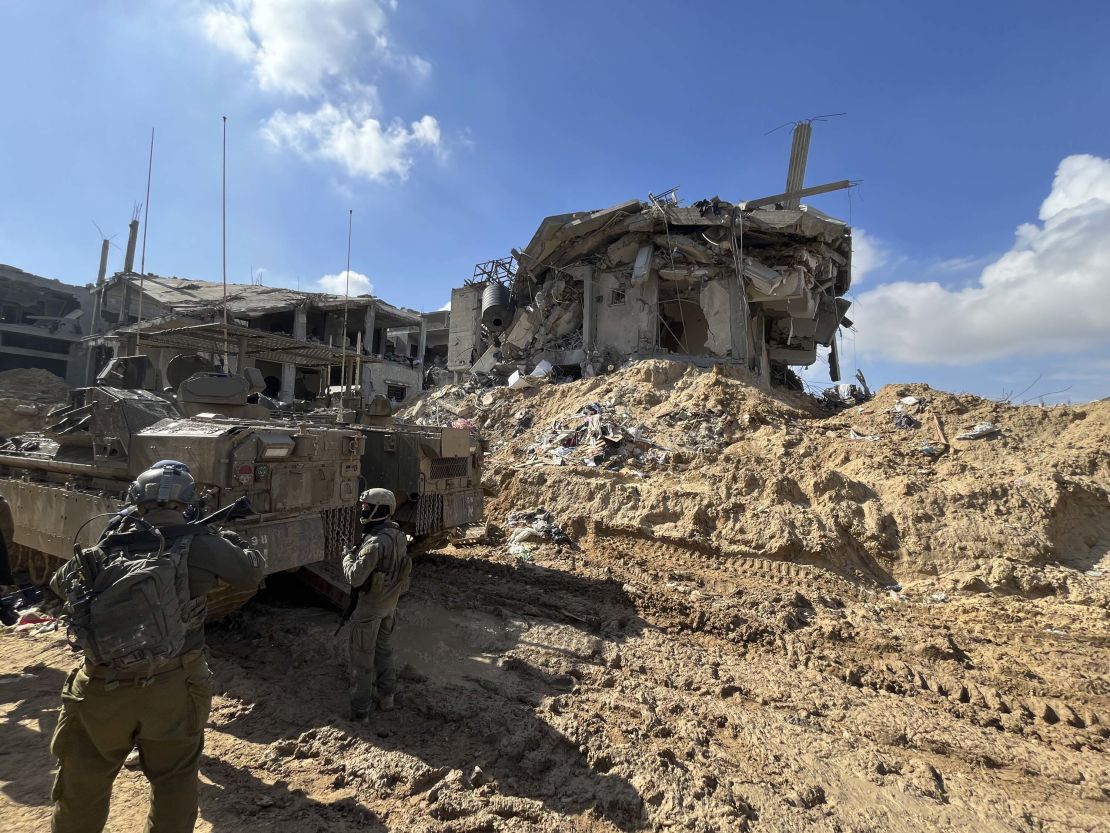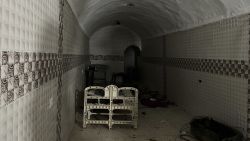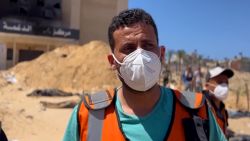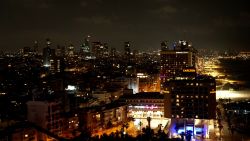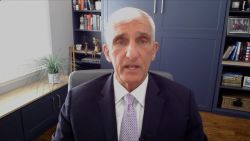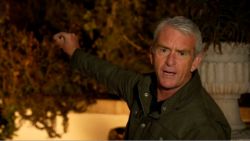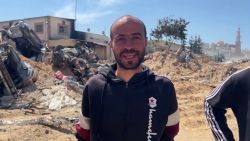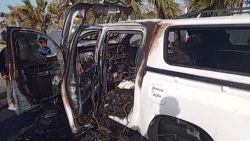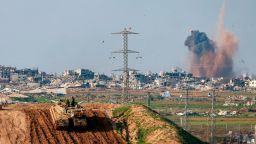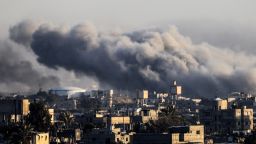The stale, damp air inside the tunnel smells of sewage. The walls are slimy, and they feel like they are closing in. When the light goes off, everything is plunged into complete darkness.
Inside this maze of tunnels under Khan Younis, there is a narrow room with an arched ceiling, divided in half by a barred metal gate. The musty chamber, which looks like a makeshift cell, is where the Israeli military says Hamas held at least 12 of the hostages kidnapped and brought to Gaza on October 7.
The Israeli military said it made that assessment based on testimony from freed hostages and forensic evidence, including DNA. Some were among those released during the pause in hostilities in late November, the military said. CNN could not independently confirm Israel’s account, but details of it tally with descriptions in Israeli media from hostages who say they were held there.
In the darkness underground, the wreckage above feels remote, and silent horror fills the void. Any hostages held here would have had limited sense of time or place. Minutes feel like hours, and after a few turns down different shafts, it’s impossible not to feel disoriented. The compound is hot and very humid. Its tiled walls and floors are wet with condensation. The air feels heavy, as if oxygen is running out.
Israel says that Hamas built a vast network of compounds like this one, connected by tunnels and shafts deep underground. The southern city of Khan Younis, which Israel considers one of the “main strongholds” of the group, is the current epicenter of fighting.
CNN was among a small group of reporters granted a military escort by the Israel Defense Forces (IDF) to see two interconnected tunnel compounds, including the room where the Israelis say hostages were held, in the central part of the city. The IDF has shown similar complexes to other media in eastern Khan Younis. The group was accompanied by one of the IDF’s top commanders, Brig. Gen. Dan Goldfuss.
On the visit, Goldfuss told CNN that the tunnel system extends across much of the Gaza Strip and was used by Hamas to plan and execute the deadly terror attack on October 7.
“They spent years and years building it, this is not a two-year project, this is years of planning. So, if anyone asks how long was October 7 being planned, I say for many years,” he said, adding that he feels some responsibility for Israel’s vulnerability to attack by Hamas. “I failed to defend my people, as a general.”
As a condition to enter Gaza under IDF escort, news outlets must submit photos and raw video footage to the Israeli military for review prior to publication. The IDF did not review this written report.
International media have been blocked access to the strip since the war began. CNN agreed to the terms to provide a rare glimpse into wartime Gaza, as Israel tries to find the remaining hostages and pushes further south into areas where hundreds of thousands of displaced Palestinians have fled.
More than 250 hostages were seized during Hamas’ October 7 terror attack on southern Israel, in which 1,200 people were killed, according to Israeli officials. More than 27,000 Palestinians have been killed and 66,000 injured, according to the Hamas-run Ministry of Health in Gaza, in Israel’s aerial bombardment and ground assault on the strip, which has flattened entire neighborhoods including this one.
A CNN journalist entered the tunnel network through the wall of a basement now entirely exposed by a giant crater, the area surrounded by blown-out, multi-story residential buildings.
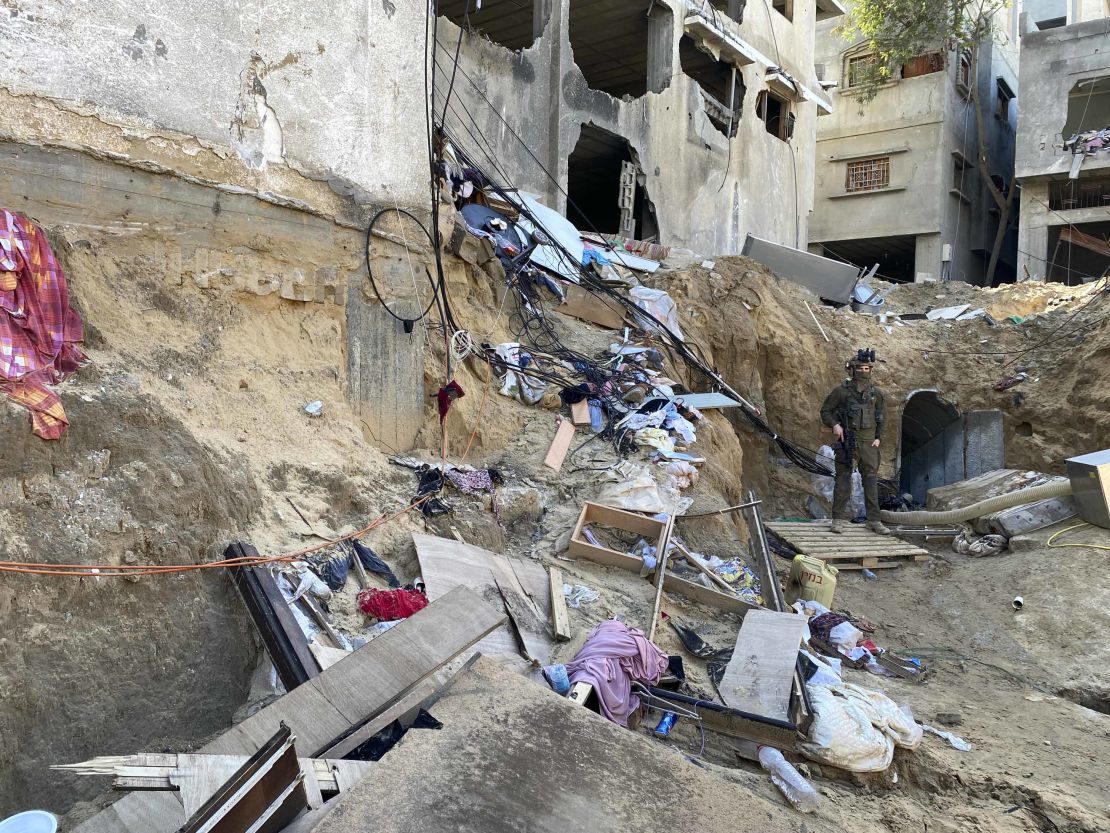
The IDF said three hostages – Sahar Calderon, 16, Or Yaakov, 16, and Sapir Cohen, 29 – were released from this location during the ceasefire agreed as part of an Israel-Hamas hostage deal in late November. The three were abducted from Nir Oz, a kibbutz community near Israel’s border with Gaza.
CNN could not independently verify whether they were held in the compound, or for how long. But Hamas propaganda videos have shown hostages in similar confined spaces with tiled walls.
More than 100 Israeli and foreign hostages were freed during the truce, with Palestinians held in Israeli prisons released in exchange. Israel believes 132 hostages are still being held in Gaza in compounds like the one CNN was escorted to under Khan Younis.
In late January, Israeli forces intensified their offensive on Khan Younis, where medical facilities and other buildings sheltering displaced civilians have been battered, causing mass casualties, according to the United Nations. The IDF has said its operations in Khan Younis are aimed at dismantling Hamas’ “military framework and strongholds,” and has used the tunnels as justification for leveling large swathes of the territory.
Palestinian health officials and paramedics have also reported Israeli tanks and attack drones firing at people trying to flee the vicinity of two hospitals in Khan Younis, where the Hamas-run health ministry said Israeli forces have cut off critical medical, food and fuel supplies. The IDF maintains that Hamas militants are using hospitals in the area for military purposes.
Underground maze
Inside the subterranean complex, the shafts are cramped. Connecting passages between rooms are just about tall enough to stand and so narrow that two people passing can’t avoid physical contact.
Some of the tunnels are flooded ankle-deep in mud.
Elsewhere, the floor slopes up and down, the depth varying between some 15 and 25 meters (50 and 80 feet) below the surface, according to the IDF, which said the section of the tunnels visited by CNN ran for about one kilometer (about 1,100 yards).
Goldfuss said the IDF believes Hamas’ leaders, including its top official in Gaza, Yahya Sinwar, hid inside this compound deep under Khan Younis as Israel launched its military response to the October 7 attack. At some point during the IDF’s ground operation, this section of the network was redesigned to hold hostages, Goldfuss said, pointing to the cage-like gate that appears to be a more recent addition.
CNN could not verify those claims, or any others that Goldfuss made about who may have been holed up in the labyrinth or what its original purpose was.
What was clear from CNN’s tour is that the compound was used for an extended period of time. Discarded trash, empty food and drink packaging, soiled blankets and random pieces of clothing lie scattered around. In a kitchen fitted with basic equipment, dirty dishes are discarded in a sink.
And yet some thought was put into the interior design. The rooms are adorned with tiles more fitting of a home than the underground compound of a militant group. In the kitchen, the tiles are painted with bowls of eggs and gherkins, baskets of flowers and jars marked, in English, “flour,” “cookies,” and “cereals.”
“You can see in the kitchen; they even took time to make themselves feel at home here. The initial objective of this tunnel wasn’t to have the kidnapped here, this was a strategic tunnel, there is a toilet, there is a bathroom, there is a maintenance tunnel, the leaders spent time here,” Goldfuss claimed.

Emerging from the underground complex reveals the enormous destruction wrought by the Israeli military.
Goldfuss said a building once stood where CNN accessed the tunnel through a huge crater and other shafts spread like a spiderweb through the neighborhood. The devastation is immense – nothing was left of the original structure; its remnants having been bulldozed away to expose the tunnel entrance.
Similar devastation could be seen throughout the surrounding residential area. Most buildings had gaping holes instead of windows, giving them a dollhouse-like appearance. On several balconies, laundry hung out to dry was still flapping in the winter breeze. Books and personal items lay scattered around the rubble.
None of the buildings appeared to be liveable, and there was no one in sight.
